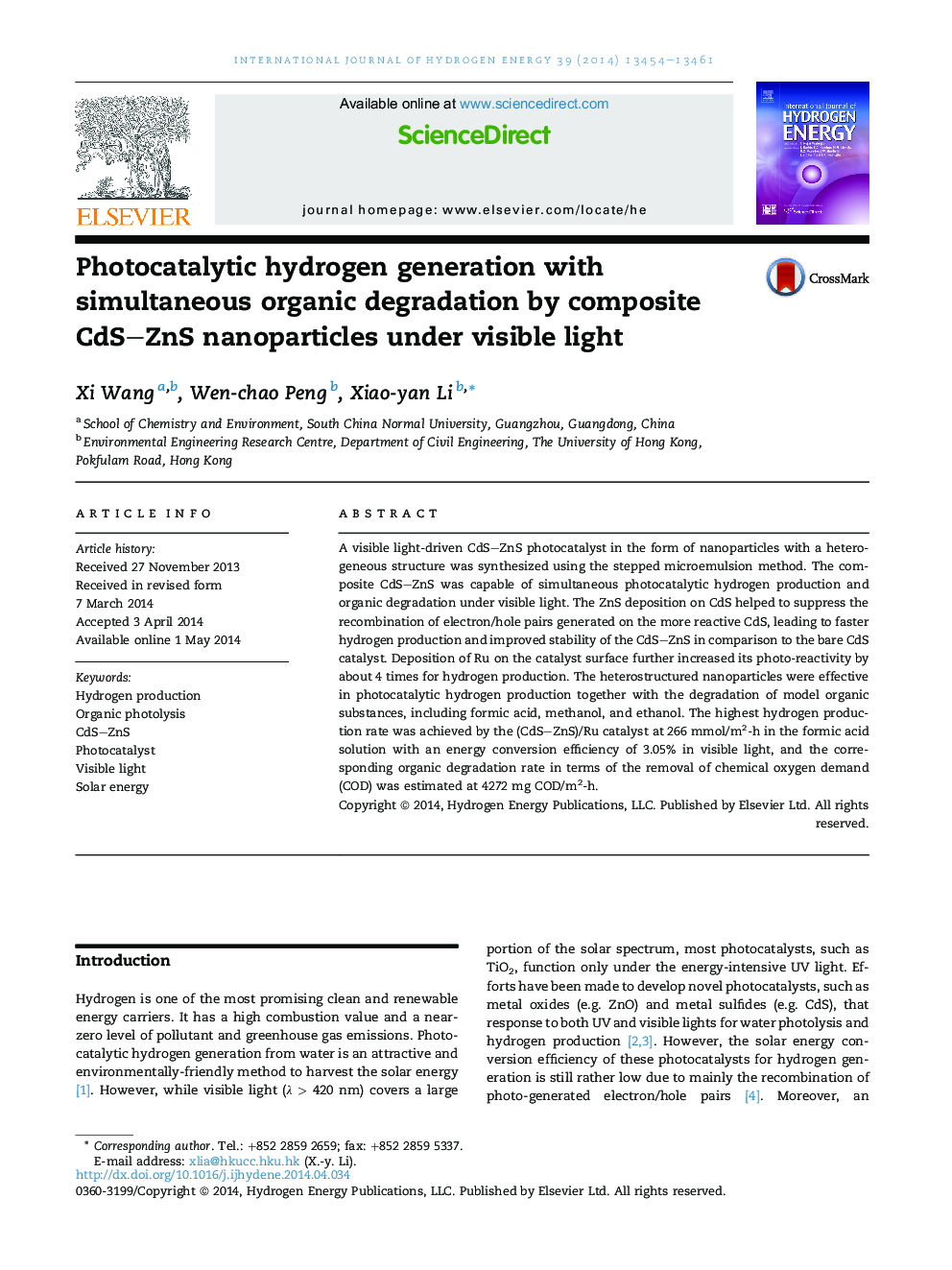| Article ID | Journal | Published Year | Pages | File Type |
|---|---|---|---|---|
| 1272639 | International Journal of Hydrogen Energy | 2014 | 8 Pages |
•Heterostructure CdS–ZnS catalyst nanoparticles produce H2 under visible light.•Nano CdS–ZnS is capable of photocatalytic H2 production and organic degradation.•Ru deposition on CdS–ZnS enhances its photo-H2 production rate by 4 times.•(CdS–ZnS)/Ru produces H2 at 266 mmol/m2-h and degrades formic acid at 4 g COD/m2-h.
A visible light-driven CdS–ZnS photocatalyst in the form of nanoparticles with a heterogeneous structure was synthesized using the stepped microemulsion method. The composite CdS–ZnS was capable of simultaneous photocatalytic hydrogen production and organic degradation under visible light. The ZnS deposition on CdS helped to suppress the recombination of electron/hole pairs generated on the more reactive CdS, leading to faster hydrogen production and improved stability of the CdS–ZnS in comparison to the bare CdS catalyst. Deposition of Ru on the catalyst surface further increased its photo-reactivity by about 4 times for hydrogen production. The heterostructured nanoparticles were effective in photocatalytic hydrogen production together with the degradation of model organic substances, including formic acid, methanol, and ethanol. The highest hydrogen production rate was achieved by the (CdS–ZnS)/Ru catalyst at 266 mmol/m2-h in the formic acid solution with an energy conversion efficiency of 3.05% in visible light, and the corresponding organic degradation rate in terms of the removal of chemical oxygen demand (COD) was estimated at 4272 mg COD/m2-h.
